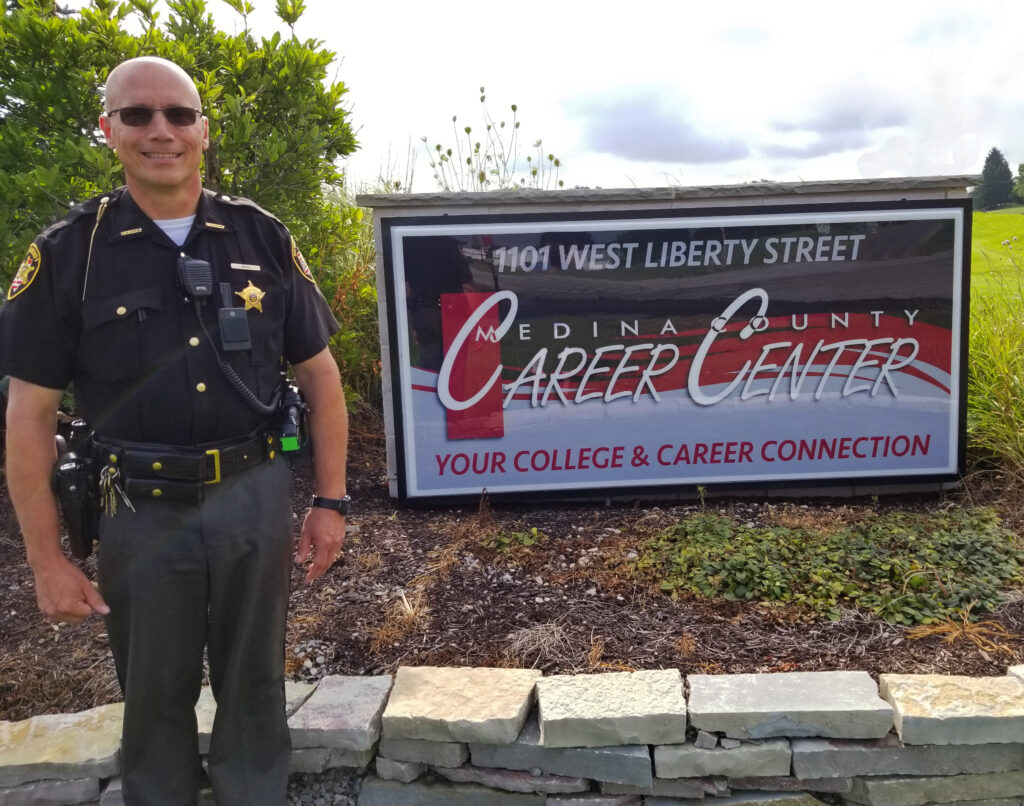The Campus Security Act requires all schools receiving certain federal funds to disclose campus crime statistics to employers, students and potential students. The Medina County Career Center strives to ensure the safety and security of all students, staff, and guests to the facility while maintaining a positive and productive learning environment. To do this, multiple safety measures have been initiated and are implemented on a continuous basis, as described in the Campus Security Report. The Medina County Career Center continues to experience a significant absence of crime.
Reporting Harassment
SAFE SCHOOL HELPLINE™!
1-800-418-6423 ext. 359

Harassment/Intimidation/Bullying Policy
HARASSMENT/INTIMIDATION/CYBER-BULLYING
Engaging in harassment, intentionally or recklessly causing or threatening physical or emotional harm to another or behaving in such a manner as to present an imminent risk of such harm.
Conduct constituting harassment may take different forms, including but not limited to the following:
HARASSMENT/BULLYING/CYBER BULLYING/SEXUAL HARASSMENT
Verbal: The making of written or oral sexual innuendoes, suggestive comments, jokes of a sexual nature, sexual propositions, or threats to a fellow student, staff member, or other person associated with the District.
Non-Verbal: Causing the placement of sexually suggestive objects, pictures, or graphic commentaries in the school environment or the making of sexually suggestive or insulting gestures, sounds, leering, whistling, and the like to a fellow student, staff member, or other person associated with the District.
Physical Contact: Threatening or causing unwanted touching, contact, or attempts at same, including patting, pinching, pushing the body, or coerced sexual contact, with a fellow student, staff member, or other person associated with the District.
Cyber Space Communication: Use of modern communication to embarrass, humiliate, threaten or harm another. Cyber-bullying is: Abusive behavior including, but not limited to, taunting, threatening, stalking, intimidating, and/or coercing by one or more individuals against other students or staff, perpetrated with computers, cellular phones, Internet websites, and/or any other electronic devices.
Sexting: “Sexting” is prohibited at any time on school property or at school functions. Sexting is the electronic transmission of sexual messages or pictures, usually through cell phone text messaging. Such conduct not only is potentially dangerous for the involved students, but can lead to unwanted exposure of the messages and images to others, and could result in criminal violations related to the transmission or possession of child pornography. Such conduct will be subject to discipline and possible confiscation of the WCD (wireless communication device).
Relational Aggression: Relational Aggression is emotional bullying. Relational Aggression is behavior with the intent to harm, humiliate and exclude. It takes aim at social relationships and hurts by damaging other’s opinions of (and relationship to) its victims. Relational Aggression manipulates how others view a particular individual by isolating them, spreading (or posting) vicious rumors and lies about their private lives, exposing secrets, and creating situations of public humiliation which involve them.
Harassment, Intimidation or Bullying also means electronically transmitted acts i.e., Internet, cell phone, personal digital assistance (PDA) or any electronic device that a student has exhibited toward another particular student more than once and the behavior both: Causes mental or physical harm to the other student/school personnel; and is sufficiently severe, persistent or pervasive that it creates an intimidating, threatening or abusive educational environment for the other student/school personnel.
GENDER/ETHNIC/RELIGIOUS/DISABILITY/HEIGHT/WEIGHT/SEXUAL ORIENTATION/GENDER IDENTITY HARASSMENT
Verbal:
Written or oral innuendoes, comments, jokes, insults, threats, or disparaging remarks concerning a person’s gender, national origin, religious beliefs, etc. toward a fellow student, staff member, or other person associated with the District.
Conducting a “campaign of silence” toward a fellow student, staff member, or other person associated with the District by refusing to have any form of social interaction with the person.
Non-Verbal:
Placing objects, pictures, or graphic commentaries in the school environment or making insulting or threatening gestures toward a fellow student, staff member, or other person associated with the District.
Physical:
Any intimidating or disparaging action such as hitting, hissing, or spitting on a fellow student, staff member, or other person associated with the District.
Any student who believes that she/he is the victim of any of the above actions or has observed such actions taken by another student, staff member, or other person associated with the District should promptly take the following steps:
A. If the alleged harasser is a student, staff member, or other person associated with the District other than the student’s teacher, the affected student should, as soon as possible after the incident, contact his/her teacher.
B. If the alleged harasser is the student’s teacher, the affected student should, as soon as possible after the incident, contact a high school administrator.
All discipline may apply.
Harassment/Intimidation/Bullying Report
August 19, 2025 – December 19, 2025: No Harassment/Intimidation/Bullying (HIB) reports were filed.
